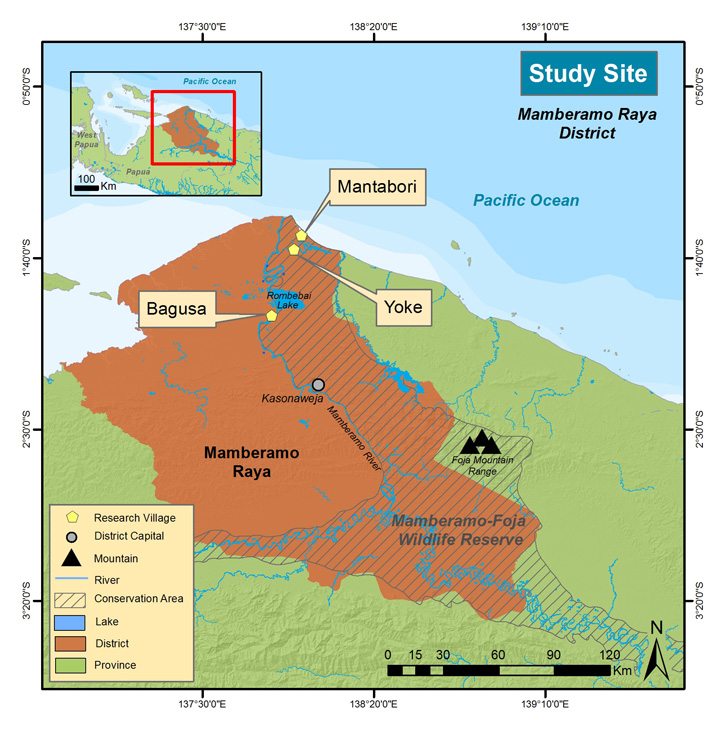
- PMRV
- Background
- Study site
- Papua
Papua

Mamberamo Raya District is known for its extensive natural forests, the diversity of its ecosystems and the rich cultures of its human population. It is part of the 8 million ha Mamberamo watershed, a territory that runs from the highest mountains of Papua (Peak Jaya, 5,030 m) to the Pacific Ocean on the north coast. The watershed includes the famous Foja Mountains and is part of the New Guinea High Biodiversity Wilderness Area. About 95% of the forest in Mamberamo is considered tropical humid forest. Overall, the landscape remains largely undisturbed due to difficulty of access as well as the District’s low population density (less than one person per square kilometre).
In the last few years, however, Mamberamo Raya has gone through significant changes: it became host to one of the biggest logging companies operating in Indonesia; was established as a district in 2007; had its district head elected in 2012; and is building its capital on the banks of Mamberamo river. New development activities have led to important transformations of the forest landscape. While local communities connect such activities to forest degradation, they also voice desire for perceived benefits of development, including increased access to education, healthcare, and markets and goods.
Our two project sites were selected from among the 59 villages in the district:
Bagusa, found on the Mamberamo’s western riverbank, is a village located inside a production forest area. Easily accessed by river transportation, its location facilitates mobility and trade, moving goods and people upstream and down. Villagers’ main sources of livelihoods come from its river and forest products.
The second village, Yoke, is located in Mamberamo Raya’s mangrove forests on the northern coast. Situated inside the Mamberamo-Foja conservation area, villagers have access to the river, the forest, and the sea. Villagers’ livelihood sources thus include a range of marine, mangrove, and forest products.


